Table of Contents
Introduction to Gaya City
Gaya, located in the Indian state of Bihar, is a spiritual and historical treasure trove. Known as an important pilgrimage destination, it attracts millions of devotees from around the world. Whether you’re a spiritual seeker or a history enthusiast, Gaya has something for everyone.
Why Gaya is a Popular Tourist Destination
Gaya is a sacred city for Hindus and Buddhists alike. From the revered Mahabodhi Temple to the mystical Barabar Caves, the city offers an enriching experience filled with devotion, history, and scenic beauty.
Spiritual and Religious Attractions
Mahabodhi Temple
The Mahabodhi Temple in Gaya, Bihar, is one of the most revered Buddhist sites in the world. It marks the location where Siddhartha Gautama attained enlightenment and became Lord Buddha over 2,500 years ago. A UNESCO World Heritage Site, this temple attracts millions of devotees and tourists each year, making it an essential pilgrimage destination for Buddhists worldwide. It is believed to be the spot where Lord Buddha attained enlightenment under the Bodhi Tree. The temple is an architectural wonder, featuring intricate carvings and a peaceful ambiance that captivates visitors.
The Mahabodhi Temple dates back to the 3rd century BCE, originally built by Emperor Ashoka of the Maurya dynasty. Ashoka, a devout follower of Buddhism, commissioned the construction of the temple to commemorate Buddha’s enlightenment.
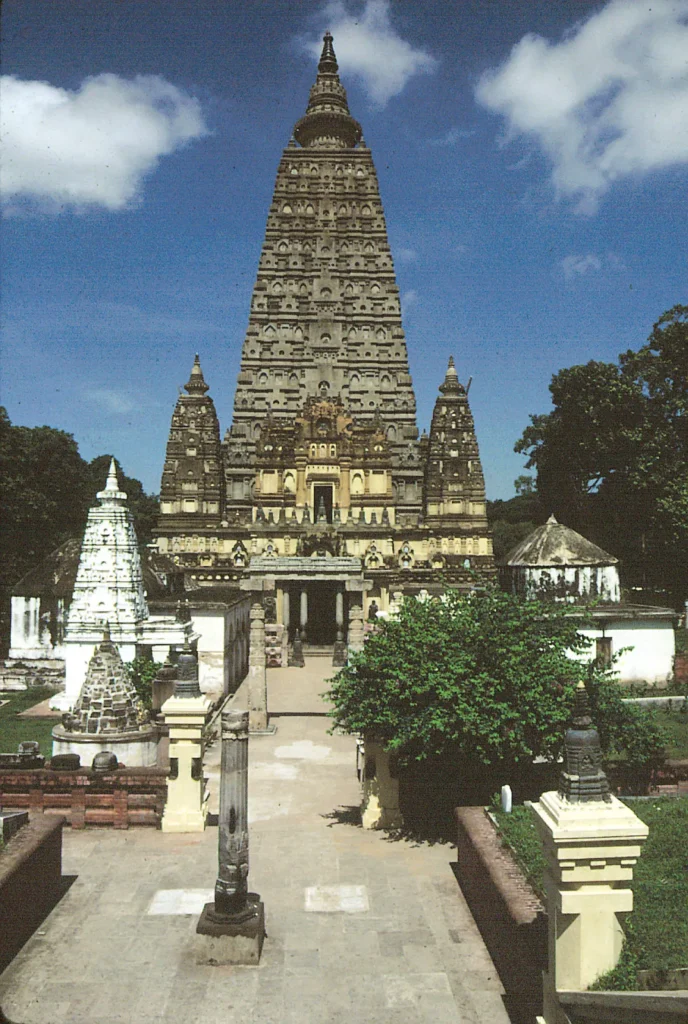
Vishnupad Temple
Vishnupad Temple, located in Gaya, Bihar, is one of the most revered temples in Hinduism. Dedicated to Lord Vishnu, the temple holds immense spiritual significance, attracting devotees from across the country. This sacred place is especially known for the Pind Daan rituals, which are performed to ensure salvation for departed souls. The temple’s origins are deeply rooted in Hindu mythology. According to legends, the sacred footprint of Lord Vishnu is enshrined within the temple. It is believed that Lord Vishnu placed his foot on the chest of demon Gayasura, subduing him and granting salvation to devotees who offer prayers here.
The name “Vishnupad” literally means “footprint of Vishnu.” The central attraction of the temple is the rock with Vishnu’s footprint, which measures about 40 cm in length. This footprint is imprinted on a basalt rock, believed to be from the Treta Yuga.
The present structure of the Vishnupad Temple was built in the 18th century by Maharani Ahilyabai Holkar of Indore. However, historical texts suggest that the temple existed much before that and has been renovated several times over the centuries.
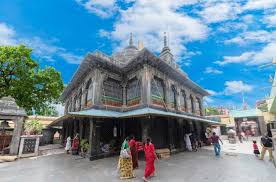
Dungeshwari Cave Temples
Nestled in the serene hills of Gaya, Bihar, the Dungeshwari Cave Temples hold deep historical and spiritual significance. This hidden gem is where Lord Buddha is believed to have meditated before attaining enlightenment in Bodh Gaya. A place of tranquility and devotion, these caves attract both Buddhist and Hindu pilgrims seeking spiritual solace.
Before attaining enlightenment under the Bodhi tree, Gautama Buddha spent six years in deep meditation at Dungeshwari Caves. It is believed that he underwent extreme austerities here, leading to his realization that self-mortification was not the right path to enlightenment.
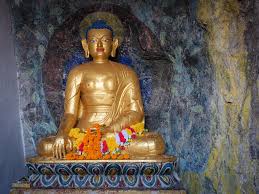
Mangla Gauri Temple
Mangla Gauri Temple, located in the sacred city of Gaya, Bihar, is one of the most revered Shakti Peethas in India. Dedicated to Goddess Mangla Gauri, a manifestation of Goddess Parvati, this temple holds deep religious significance. Pilgrims and devotees from all over India visit this holy shrine to seek the blessings of the Goddess for prosperity, marital bliss, and protection from negative forces.
The origins of Mangla Gauri Temple date back to ancient times. It is believed to be mentioned in Hindu scriptures like the Puranas and Tantras. According to mythology, the temple is one of the 51 Shakti Peethas, places where body parts of Goddess Sati fell when Lord Shiva carried her burning body after her self-immolation. The breast of Goddess Sati is believed to have fallen at this site, making it a highly sacred location for Shakti worshippers.
As one of the Shakti Peethas, this temple is a major pilgrimage center for followers of Shaktism. Worshipping Goddess Mangla Gauri is believed to remove obstacles, grant marital harmony, and bless devotees with happiness and well-being. The temple is particularly significant for women who pray for the well-being of their husbands and families.
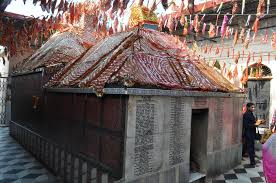
Historical and Cultural Landmarks
Barabar Caves
The Barabar Caves are the oldest rock-cut caves in India, dating back to the Maurya period. They are known for their polished interiors and historical inscriptions, making them a fascinating site for history lovers.
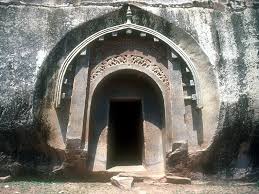
Surya Kund
This sacred water reservoir is associated with Hindu rituals. Pilgrims take a holy dip here before offering prayers at nearby temples. The calm and peaceful surroundings make it an excellent place for relaxation.
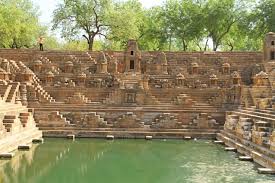
Thai Monastery
This monastery stands as a symbol of India-Thailand cultural ties. The golden statue of Buddha and the serene gardens make it a peaceful retreat for visitors.
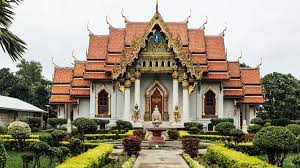
Natural and Scenic Attractions
Brahmayoni Hill
Brahmayoni Hill in Gaya, Bihar, is a revered spiritual site deeply embedded in Hindu and Buddhist traditions. Known for its breathtaking views and mythological importance, this hill attracts thousands of pilgrims and adventure seekers every year.
Historical Significance of Brahmayoni Hill
Connection to Hinduism
Brahmayoni Hill is named after the Hindu goddess Brahmayoni, symbolizing spiritual enlightenment. Devotees believe that meditating here brings inner peace and divine blessings.
Association with Buddhism
Buddhism also finds a connection to this sacred hill. It is believed that Lord Buddha visited this site, making it significant for Buddhist monks and practitioners.
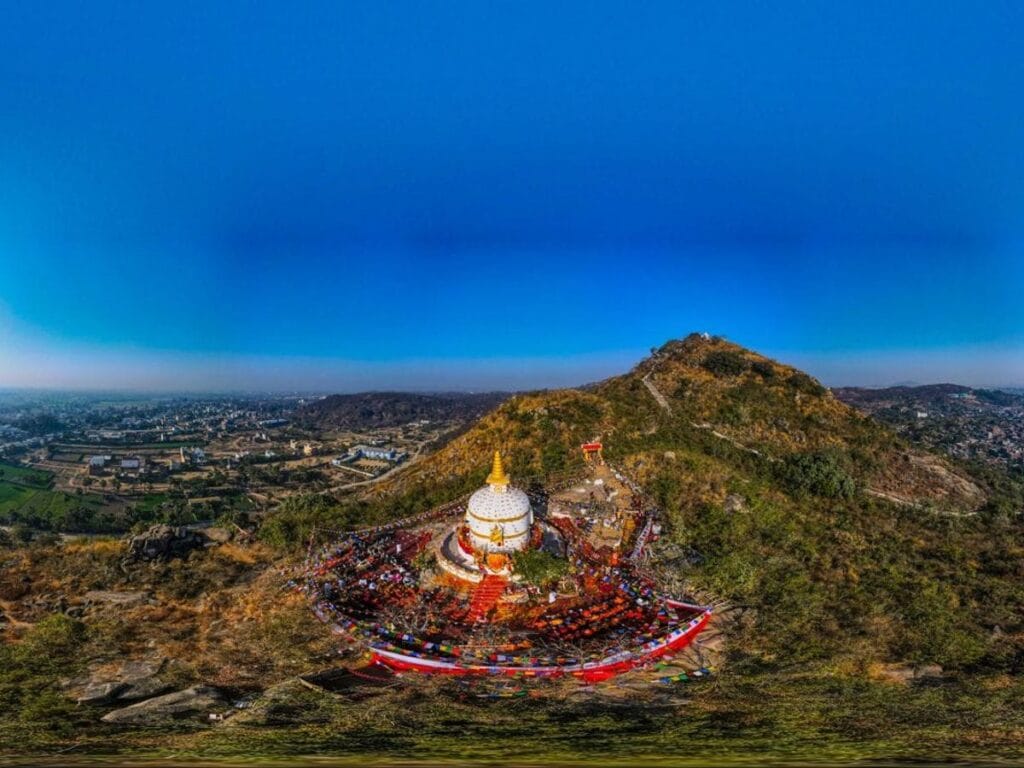
Pretshila Hill
.Pretshila Hill, located in the sacred city of Gaya, Bihar, is one of the most revered pilgrimage sites in India. Known for its deep-rooted connection with Hindu mythology, it is believed to be the place where people perform Pind Daan, a ritual dedicated to their ancestors’ salvation. Apart from its religious significance, the hill is also known for its breathtaking views and serene environment, making it a perfect destination for both spiritual seekers and nature lovers.
Pretshila Hill, also known as the “Hill of Spirits,” holds immense religious importance in Hinduism. According to ancient texts, it is the place where Lord Vishnu himself is said to have guided devotees in performing Pind Daan, a sacred ritual for ancestors. Many believe that performing Pind Daan at this holy hill grants moksha (liberation) to departed souls, freeing them from the cycle of birth and death.
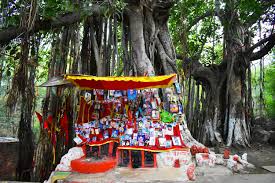
Best Time to Visit Gaya
The best time to visit Gaya is between October and March when the weather is pleasant. The city also hosts various festivals like Buddha Purnima and Pitri Paksha, attracting large crowds.
How to Reach Gaya?
By Air
Gaya International Airport connects the city to major Indian and international destinations.
By Train
Gaya Junction is a major railway hub with frequent trains from major cities like Delhi, Kolkata, and Varanasi.
By Road
Gaya is well-connected by road, with buses and taxis available from Patna and nearby cities.
Where to Stay in Gaya?
Gaya offers accommodation options ranging from budget lodges to luxury hotels. Popular options include Bodhgaya Regency Hotel, Hotel Sujata, and the Mahabodhi Resort.
Conclusion
Gaya is a city rich in spirituality, history, and natural beauty. Whether you are seeking divine blessings, exploring ancient history, or enjoying scenic landscapes, Gaya promises an unforgettable experience.
FAQ’S
What is the most famous temple in Gaya?
The Mahabodhi Temple is the most famous temple in Gaya, known for its association with Buddha’s enlightenment.
What is the best season to visit Gaya?
The ideal time to visit Gaya is from October to March, when the weather is pleasant for sightseeing.
How many days are enough to explore Gaya?
A 2-3 day trip is sufficient to explore the major attractions of Gaya.
Is Gaya safe for solo travelers?
Yes, Gaya is generally safe for solo travelers. However, it is advisable to stay in well-reviewed accommodations and avoid isolated areas at night.
Are there any local delicacies to try in Gaya?
Yes! Some must-try dishes include Litti Chokha, Sattu Paratha, and Thekua, which are popular in Bihar’s cuisine.



